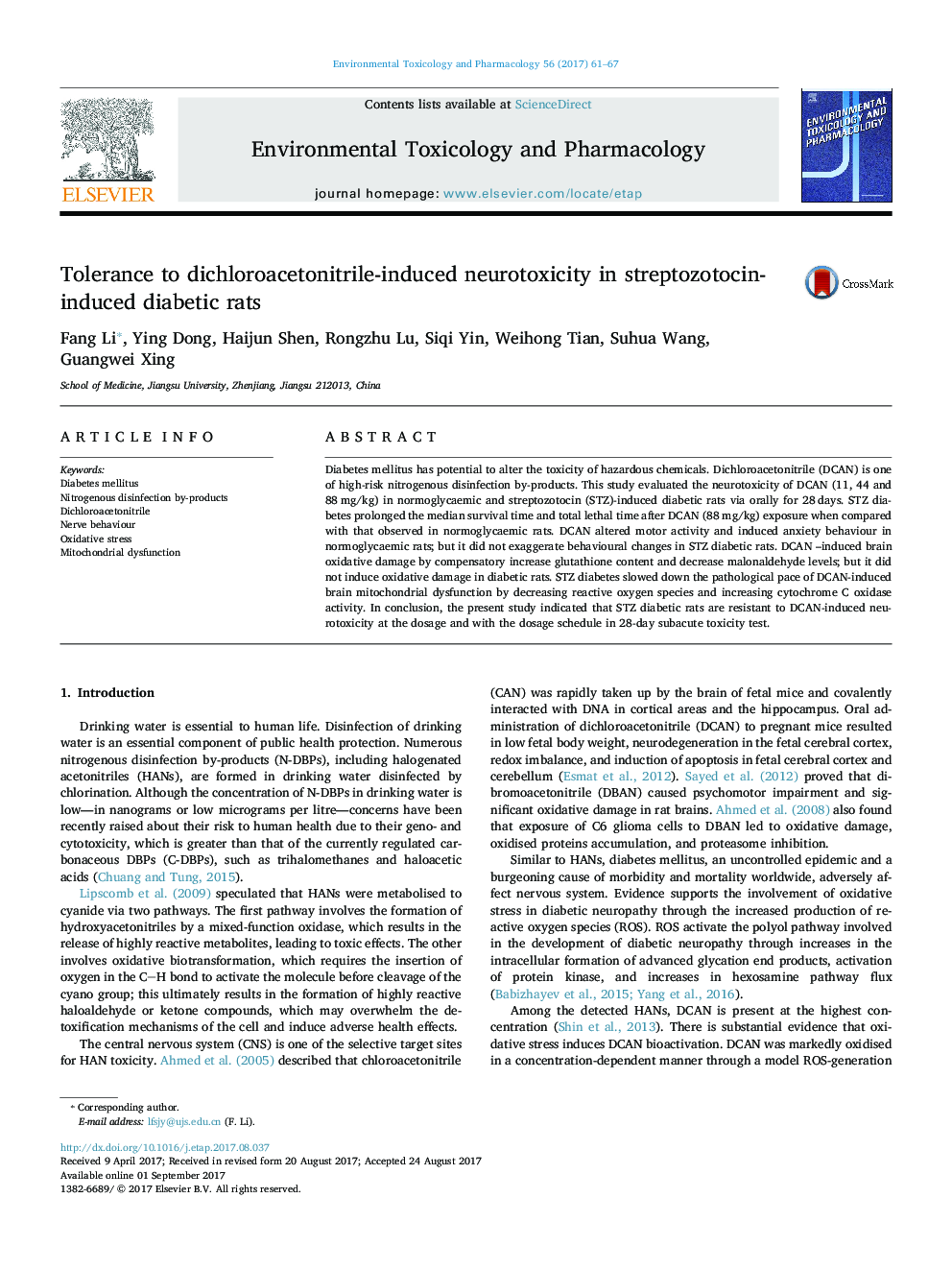| Article ID | Journal | Published Year | Pages | File Type |
|---|---|---|---|---|
| 5559633 | Environmental Toxicology and Pharmacology | 2017 | 7 Pages |
â¢Tolerance to dichloroacetonitrile (DCAN)-induced neurotoxicity in diabetic rats.â¢The median survival time and total lethal time in DCAN-exposed diabetic rats were prolonged.â¢Diabetes did not aggravate DCAN-induced motor impairment and anxiety like behaviour.â¢Diabetes slowed down pathological pace of DCAN-induced mitochondrial dysfunction.â¢Diabetes had no significant effect on DCAN-induced oxidative damage.
Diabetes mellitus has potential to alter the toxicity of hazardous chemicals. Dichloroacetonitrile (DCAN) is one of high-risk nitrogenous disinfection by-products. This study evaluated the neurotoxicity of DCAN (11, 44 and 88Â mg/kg) in normoglycaemic and streptozotocin (STZ)-induced diabetic rats via orally for 28Â days. STZ diabetes prolonged the median survival time and total lethal time after DCAN (88Â mg/kg) exposure when compared with that observed in normoglycaemic rats. DCAN altered motor activity and induced anxiety behaviour in normoglycaemic rats; but it did not exaggerate behavioural changes in STZ diabetic rats. DCAN -induced brain oxidative damage by compensatory increase glutathione content and decrease malonaldehyde levels; but it did not induce oxidative damage in diabetic rats. STZ diabetes slowed down the pathological pace of DCAN-induced brain mitochondrial dysfunction by decreasing reactive oxygen species and increasing cytochrome C oxidase activity. In conclusion, the present study indicated that STZ diabetic rats are resistant to DCAN-induced neurotoxicity at the dosage and with the dosage schedule in 28-day subacute toxicity test.
Graphical abstractDownload high-res image (175KB)Download full-size image
